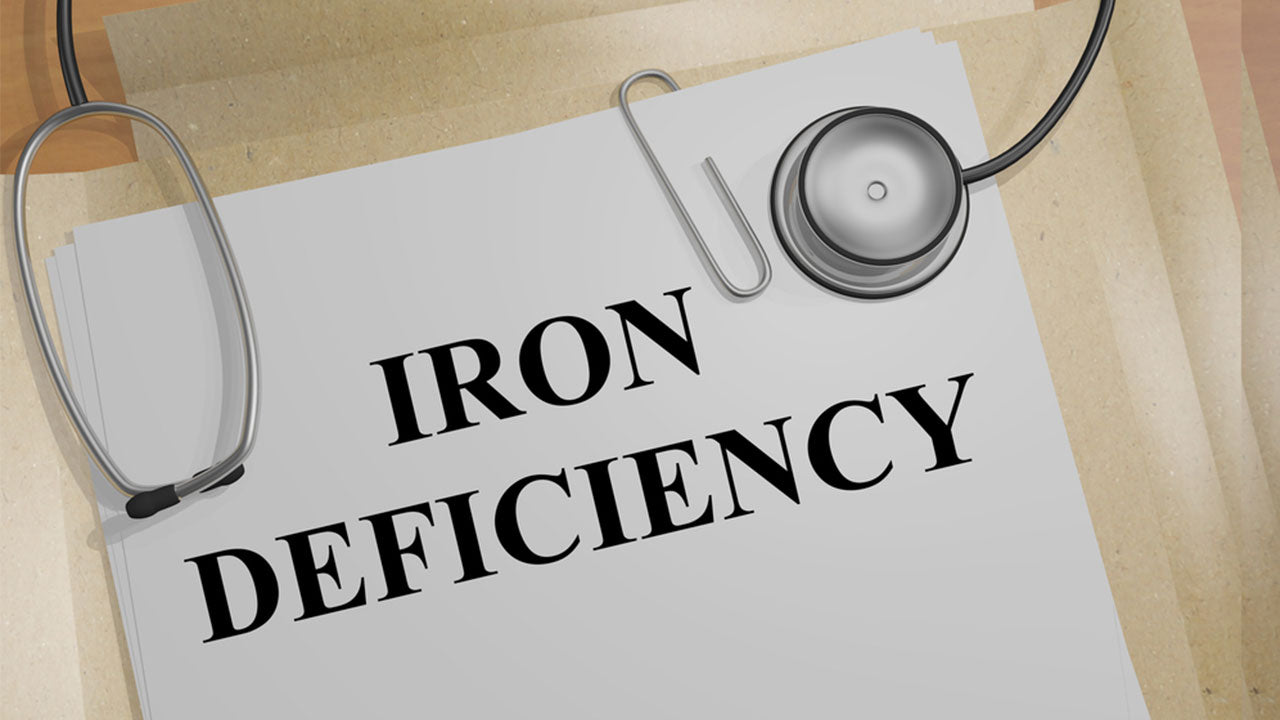Pernicious Anemia: Causes, Symptoms and Treatment
 By: by Amino Science
By: by Amino Science

Anemia is a common condition in which one does not have enough red blood cells or has blood cells that do not function properly. The result is a lack of oxygen flow to the body’s organs and tissues. There are many causes of anemia, including iron deficiency anemia and sickle cell anemia. The most common cause of anemia is the body’s inability to absorb vitamin B12, which is necessary to produce healthy red blood cells. This type of anemia is often referred to as megaloblastic anemia because the red blood cells that are produced are much larger than normal. Pernicious anemia is a kind of vitamin B12 deficiency anemia.
With the word pernicious in its name, pernicious anemia can sound like a frightening diagnosis. The word pernicious, meaning fatal, was used to describe this particular condition when it was first discovered and thought to be a deadly disease. This was before vitamin B12 treatments were available. However, science and medicine have come a long way, and today pernicious anemia is relatively easy to manage.
What Causes Pernicious Anemia?
The stomach contains cells called parietal cells that produce a protein called intrinsic factor as well as hydrochloric acid. Hydrochloric acid works by helping B12 release from food, while intrinsic factor works by absorbing B12. If the parietal cells, intrinsic factor, or hydrochloric acid are not working properly, or there is a lack of intrinsic factor, then a person is at risk of developing anemia.
Pernicious anemia is a type of autoimmune disorder. An autoimmune disease occurs when the body’s immune system mistakes normal, healthy cells for dangerous substances such as bacteria and viruses and works to eradicate them. In pernicious anemia, the immune system thinks that the parietal cells or the intrinsic factor protein are foreign invaders, so it attacks and destroys them. The result is fewer cells and proteins to be used in the absorption of vitamin B12. The body’s inability to absorb vitamin B12 due to its mistakenly attacking itself is the condition called pernicious anemia.
Symptoms of Pernicious Anemia
The Pernicious Anemia Society highlights three key points when it comes to pernicious anemia symptoms:
- Symptoms typically develop over several years as opposed to appearing suddenly. As a result of this gradual development of symptoms, many people brush their symptoms off or attribute them to other factors such as stress or aging and delay getting to a doctor for treatment.
- Symptoms vary greatly from patient to patient.
- Many of the symptoms are typical of other diseases, including several autoimmune diseases. This creates difficulty for physicians trying to diagnose a patient’s symptoms.
Common pernicious anemia symptoms include:
- Shortness of breath
- Dizziness
- Headache
- Cold extremities
- Pale or yellowish skin
- Chest pain
- Weight loss
- Weakness
A lack of vitamin B12 may cause the following:
- Nausea and vomiting
- Confusion
- Depression
- Loss of appetite
- Heartburn
- Constipation
Low levels of B12 may also cause nervous system dysfunction that manifests as...
- A wobbly walk
- Stiff and tight muscles
- Arm and leg numbness
- Lesions of the spinal cord
- Memory loss
According to the American Autoimmune Related Diseases Association, symptoms of pernicious anemia in adults typically do not begin to show until after age 30. The Pernicious Anemia Society notes that while there are several known symptoms of pernicious anemia, the disease affects each patient individually. Symptoms may be present that are not included in their list of possible symptoms.

Pernicious Anemia Risk Factors
Some people are at a higher risk of developing pernicious anemia than others. According to the National Heart, Lung, and Blood Institute, those at a higher risk for pernicious anemia are those who:
- Are of Northern European or African descent
- Have a family history of pernicious anemia
- Have had part or all of the stomach surgically removed
- Have an autoimmune disease, particularly of the endocrine glands, such as Addison’s disease, type 1 diabetes, or Graves’ disease
- Have had part or all of the small intestine surgically removed
- Have certain intestinal diseases or disorders such as Crohn’s disease or intestinal infections
- Take medications, such as antibiotics or certain seizure medicines, that prevent proper absorption of vitamin B12
- Are a vegetarian who doesn’t eat any animal or dairy products and does not take a B12 supplement, or those who have a poor diet overall (taking a vegan essential amino acid supplement can help shore up nutritional gaps)
Diagnosing Pernicious Anemia
Getting a pernicious anemia diagnosis can be a difficult and lengthy process since the disease may mimic other diseases. Usually, pernicious anemia can be diagnosed through a series of blood tests. Common diagnostic tests include:
- Complete Blood Count (CBC): A CBC checks for the number of red blood cells, white blood cells, and platelets, the average size of the red blood cells, the number of iron-rich proteins in the blood, and how much space in the blood is taken up by red blood cells. If any of these numbers are off, it can help point the doctor toward anemia, but not necessarily pernicious anemia. Additional tests will be needed to confirm what kind of anemia is present.
- Vitamin B12: This test will determine if one has a low level of vitamin B12 in the blood, which may indicate pernicious anemia.
- Homocysteine and methylmalonic acid (MMA): High MMA levels suggest pernicious anemia.
- Antibodies: Intrinsic factor antibodies and parietal cell antibodies are an indication of pernicious anemia. This means the body is producing antibodies against these proteins and cells.
- Reticulocyte count: This test will let the doctor know if the patient’s bone marrow is producing red blood cells at a healthy rate. A low reticulocyte count can indicate pernicious anemia.
Treating Pernicious Anemia
Pernicious anemia is fairly easy to treat. B12 supplements, either in pill or injectable form, are typically prescribed to raise vitamin B12 levels. If a patient has a severe case, then B12 shots are generally given daily or weekly until the patient’s levels of B12 have increased. Regular blood tests will be given to monitor the level of B12 in the blood. Once the level of B12 has returned to a healthy amount, the patient may reduce the B12 injections to once a month and continue to be monitored through blood work. If the case is less severe, then doctors typically prescribe B12 in pill form and monitor blood work to make sure the levels increase to a healthy amount.
Those being treated for pernicious anemia often find relief shortly after beginning B12 supplements. Many patients see symptoms improve after just a few days of receiving treatment. Patients’ blood work will continue to be monitored to ensure they are receiving an adequate amount of B12. Pernicious anemia patients often stay on B12 supplements for life.
Complications of Pernicious Anemia
Pernicious anemia complications are usually pretty rare. But complications are possible, so it’s important to be aware of what they are and their symptoms.
- Genetic risk factor: Pernicious anemia patients should be sure to tell their family members about their diagnosis since it is known to run in families. If a pernicious anemia patient has a child, he or she should watch for any potential warning signs or symptoms that the child has developed pernicious anemia. Rarely, a condition known as congenital pernicious anemia can occur, in which a baby does not make enough intrinsic factor or is unable to absorb vitamin B12.
- Stomach cancer: Pernicious anemia patients are at an increased risk of developing stomach cancer. Patients should be sure to follow up with their physicians for regular check-ups so that the physician can check for early warning signs.
- Internal damage: If pernicious anemia is left untreated for a considerable amount of time, serious complications may arise that may be permanent. These include nerve damage, heart damage, and digestive tract damage.
Pernicious anemia can be difficult to identify, especially since symptoms often appear gradually over a long period. It can be easy to dismiss symptoms as just feeling tired or too much stress. But any unusual symptoms should be discussed with a physician to ensure a timely diagnosis. Like with most diseases, the sooner treatment begins for pernicious anemia, the better the outlook.

Up to 25% off Amino
Shop NowTAGS: conditions
Join the Community
Comments (0)
Most Craveable Recipes




 833-264-6620
833-264-6620



















